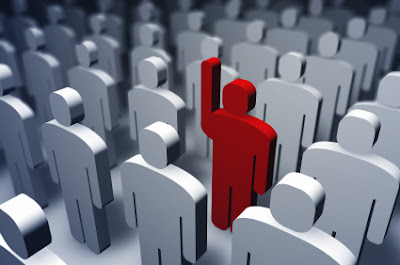In my last post on The Human Touch I discussed how a warm, caring human being trumped a crappy, highly inconvenient system. And now for something completely different…
A few weeks ago I went into Philly to meet an old friend for dinner. Mindy had just moved back to the Philly area after too long an absence. She was happy to be returning to the city life, and particularly happy to find that there was an organic food co-op a block from her new place. Over dinner she related the following story.
After getting moved in, Mindy grabbed her environmentally friendly canvas bag and headed down the block to the co-op to do some shopping. The co-op’s a fair-sized place, spread over two floors. Lots of veggies, fruits, meats, dairy, knickknacks, and a very active community bulletin board. There’s lot’s to see, so Mindy takes her time, browsing through the store, taking it all in, while slowly adding items to her canvas bag.
Little by little Mindy starts to feel a little weird. People are watching her. Giving her strange looks. Dirty looks? What’s going on? Maybe she’s been out in the sticks too long and is just not use to the unfriendly ways of east coast city life? No, people are definitely watching her. And following her. Like maybe she’s a thief…
After this goes on for about 1/2 an hour, the manager approaches her and says, “Is there some reason you’re putting items in that canvas bag?” Mindy replies, “Um, yes. Because I’m shopping.” The manager informs her in a none-too-friendly tone that all customers must use the little plastic baskets for shopping. Mindy says, “Oh, well, I didn’t know that.” So she grabs a plastic basket and transfers all of her items into it, wondering why no one told her sooner.
She finishes up her shopping, goes to the cashier, pays for her items and goes to the door. At the door she transfers her items from the basket to her canvas bag and walks out.
 She’s about 1/2 way down the block when the manager comes running out of the store calling, “Miss!! Miss!!”. He chases her down, stops her, and says, “I’m sorry but I have to see what’s in your bag.” Mindy replies, “I’m sorry, are you accusing me of stealing? Here’s my receipt.” The manager insists he has to see what’s in the bag. Mindy says, “Fine” and dumps the contents onto the sidewalk. The manager inventories the purchase against the receipt, and then leaves.
She’s about 1/2 way down the block when the manager comes running out of the store calling, “Miss!! Miss!!”. He chases her down, stops her, and says, “I’m sorry but I have to see what’s in your bag.” Mindy replies, “I’m sorry, are you accusing me of stealing? Here’s my receipt.” The manager insists he has to see what’s in the bag. Mindy says, “Fine” and dumps the contents onto the sidewalk. The manager inventories the purchase against the receipt, and then leaves.
There was no apology.
OK, so here’s the punchline. When Mindy told me this story I said, “So I guess you’re never going back.” Sheepishly she tells me she’s already been back. And she’s signed up to become a member. WHAAA??? Mindy says, “It’s just so convenient!”
The thing is, I understand. Convenience is something we all value. In Mindy’s case, she valued convenience so much it outweighed the crappy treatment she received. Of course, the co-op is not only convenient, it offers a niche service. You can’t go to the Acme and get the same goods, so the co-op can get away with lousy customer service. They’re not only the closest game in town, they’re the only game in town. Literally.

In my last post, I related how a human touch — truly exemplary service — helped make up for a decided lack of convenience. However Mindy’s story revealed how convenience can also trump bad service, especially if the service fills a specific need that is otherwise difficult to fill.
Ideally, of course, we want our libraries to be both convenient and customer-service oriented. We want well-designed systems AND the warmth of caring human contact. Unlike the organic food co-op, however, libraries no longer have the luxury of providing niche market services.
In the good old days (prior to 1994) many of our customers had to come to us. We were the only game in town. But I’m afraid that our prior near-monopoly on information services made some of us a bit too comfortable. We were able to get away with clunky systems, restrictive policies, and unfriendly staff. Customers didn’t have much of a choice. Well, those days are gone, and they’re not coming back. That doesn’t mean libraries don’t have a lot to offer, but it does mean we have to be much more aware of the value that our customers place on convenience and friendly service if we expect to remain relevant.
As some of you may know, I’m involved in the management of New Jersey’s 24/7 VR service, QandANJ.org. We celebrated our 6th anniversary in October, and in those six years we’ve collected thousands of customer comments. Two of the most frequent comments we receive are variations on, “Wow, it was great to have a live person helping me.” and “Wow, this was just so convenient.” I’m proud to be associated with QandANJ because we’re translating (or “operationalizing”) one of librarianship’s core values: removing the barriers between people and information. It’s personal service with anytime/anywhere convenience that our customers value.
I’m not suggesting that every library needs to be doing virtual reference (although I do think every library should at least be available through IM.) I am suggesting that if libraries are to thrive, it’s imperative that we audit our staff and services with a critical eye toward ramping up convenience and bringing a human touch to all of our services and all primary points of contact with our customers (our front doors, our phone systems, and our websites.)
[New Seasons] employees are given “get out of jail free” cards with the instructions to do anything a customer wants. Mr. Rohter said one young clerk opened 81 jars of mustard for a customer to taste. Then he went to his supervisor, handed the card to him and explained what happened.





